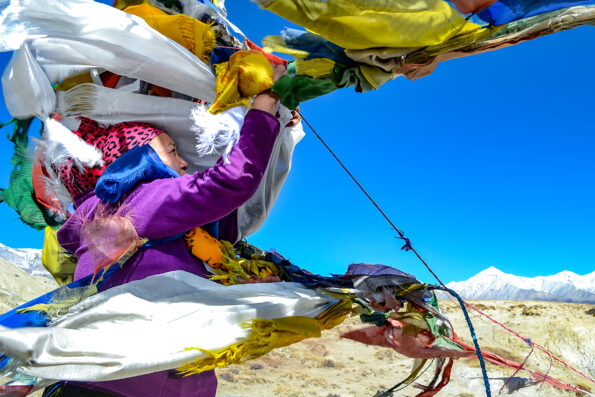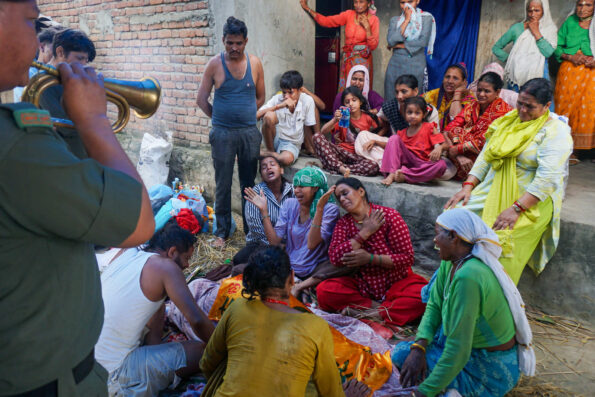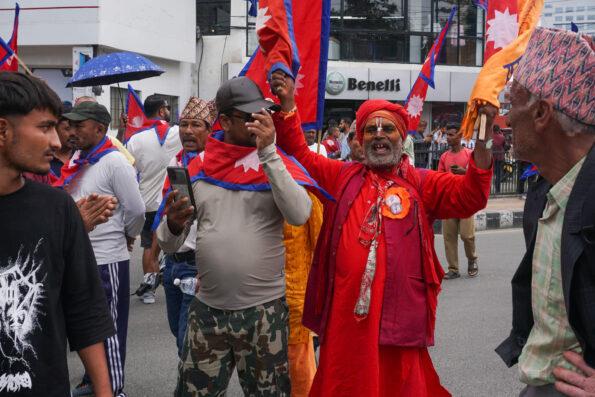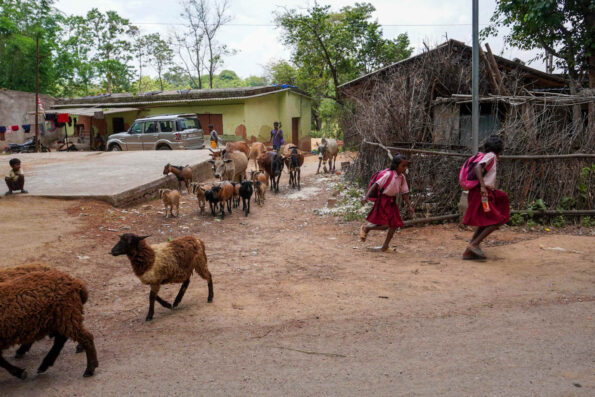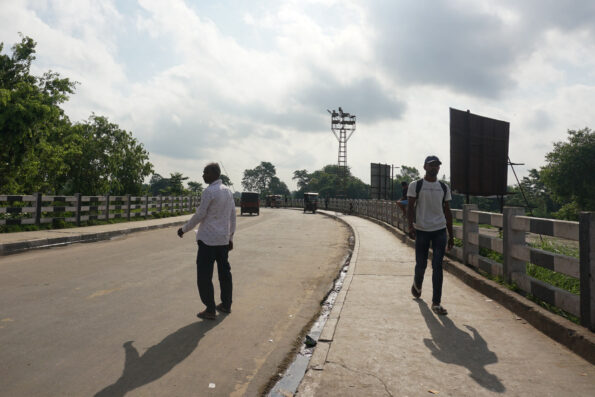
Sunita Neupane, GPJ Nepal
Sunita Lama, who moved to Lazimpat eight years ago, says she considers the house she rents her home, where her poverty and happiness coexist.
KATHMANDU, NEPAL — If you take a walk in Lazimpat, here is what you might see: narrow streets buzzing with life, cozy cafes filled with laughter and lively conversations, and beauty parlors where people lean toward each other, perfecting their makeup. This neighborhood in the heart of Kathmandu is known to be vibrant and welcoming. Sunita Lama, a sex worker, says she moved here eight years ago in search of a community.
“I was in the dark, then I found my way to the light,” Lama says.
For her and other gender and sexual minorities in Nepal who, despite the country’s progressive laws, struggle to find housing, this upmarket residential neighborhood has become a haven, allowing them to live freely. The transformation of this neighborhood is largely driven by the local sex work industry and the presence of Blue Diamond Society. The nongovernmental organization working with sexual and gender minorities in Nepal was originally located in the neighborhood. However, in 2014 it moved its main office to Dhumrabarahi, about 4 kilometers (2.5 miles) away. Despite the move, it still conducts some of its operations in Lazimpat.
Before moving to Lazimpat, Lama says she heard about Blue Diamond Society through a friend. She started attending their events, where she met other people with different sexual orientations and gender identities. Then, she relocated to the neighborhood.
In the five places she lived before, Lama says landlords harassed her while others refused to rent to her because she was a transgender woman. In her experience, whenever landlords in Nepal suspect a potential tenant is transgender, they ask for citizenship certificates, which can present significant issues as many have yet to acquire certificates that match their chosen gender and name.



This is despite Nepal’s Right to Housing Act of 2018, which states that no citizen can be denied housing or discriminated against based on religion, caste, gender or other factors.
It was easier to find a house in Lazimpat, Lama says. She currently rents three rooms, where she lives with her two sons, ages 16 and 18. It’s an old house with unpainted walls. One room serves as her office, which she refers to as the “World of Love.” The office — where she does work for her organization, Mayako Sansar, which advocates for the rights of gender and sexual minorities in sex work — is her favorite corner of the house. It is where she comes to forget the pain she has endured as a sex worker.
Most of the sexual and gender minorities who rent houses in Lazimpat, including Lama, engage in sex work. Pinky Gurung, president of the Blue Diamond Society, says the neighborhood is accepting of sex work. “They pay whatever the landlord asks for,” Gurung says. “Money makes things easier. Money, power and ability are effective weapons in the fight for acceptance.”
The presence of Blue Diamond Society, which opened an office in Lazimpat in 2001, has also attracted many to the neighborhood. Gurung says when they first opened, the organization’s offices became a home for many sexual and gender minorities, including transgender women. They’d dress up in the office as they wished, apply makeup, sing and dance. In the evening, they would change back to the clothes they came in, remove their makeup and return home.
Then a few began renting rooms in the neighborhood because being near Blue Diamond Society made them feel safer. “Being in a group boosts confidence. They gradually invited friends like themselves, and a community emerged,” Gurung says. Although she doesn’t have the exact figures, Gurung estimates that hundreds of gender and sexual minorities now live in Lazimpat.



But the neighborhood hasn’t always been this friendly. Setting up the Blue Diamond Society’s office was particularly challenging, says Sunil Babu Pant, an activist and the group’s founder. “The local community did not [want to] rent us the house,” Pant says. Luckily, Pant had a sister who rented them a house. They bought the building after receiving funding.
It didn’t end there. The local community would file complaints at the ward office saying that they made noise and spread perversion, Pant says. “Later, we started inviting the neighbors to the program. They started coming, and gradually awareness spread.”
Laxmi Manandhar Timalsina, 50, has lived in Lazimpat all her life. “We were surprised when we first saw them,” she says. Local residents like her had long associated gender and sexual minorities with sex work, which they disapproved of, Timalsina says. But as she learned more, her understanding grew.
The neighborhood has also become a significant cultural center for LGBTQ+ people. Since 2002, sexual and gender minorities in Lazimpat have celebrated Gai Jatra, a Newari festival to commemorate dead loved ones. But it has now become a pride parade in Nepal. LGBTQ+ people dress up and march in memory of deceased friends, Gurung says.



Babu Dumi Rai recently relocated to Lazimpat after separating from his family. Rai, a gay man, says being part of the community in Lazimpat gives him confidence. “Nobody judges us here.”
Rai says before Blue Diamond Society, he had never heard of an LGBTQ+ community. Now 21, he moved to Kathmandu at age 14 to study social sciences. A chance to work at Blue Diamond Society changed everything, he says, opening his eyes to an identity he had initially struggled to embrace.
While Lazimpat has become a haven, it comes at a price. As with most of Kathmandu, rental rates are unregulated, says Rajendra Kumar Shrestha, ward chairperson. Sexual and gender minorities pay more than they should, he says. “We are thinking how to regulate.”
The ward office occasionally receives complaints from tenants in Lazimpat who say they have been harassed or evicted by their landlord because of their gender expression, Shrestha adds. “We reconcile both sides.” The problem, he says, is that there is no program or policy in place to ensure access to housing for sexual and gender minorities.
Sujan Pant, an advocate, says while people have made a community for themselves in Lazimpat, some face challenges accessing houses and settle for spaces no one else wants.
Rubina Bhujel has lived in Lazimpat for 10 years. She considers the people in the community her family. “The home I had by blood was different, but my community is my true home,” Bhujel says. “When I die, I want my community to perform my last rites.”
For her, home means gathering with friends and sharing joy.



